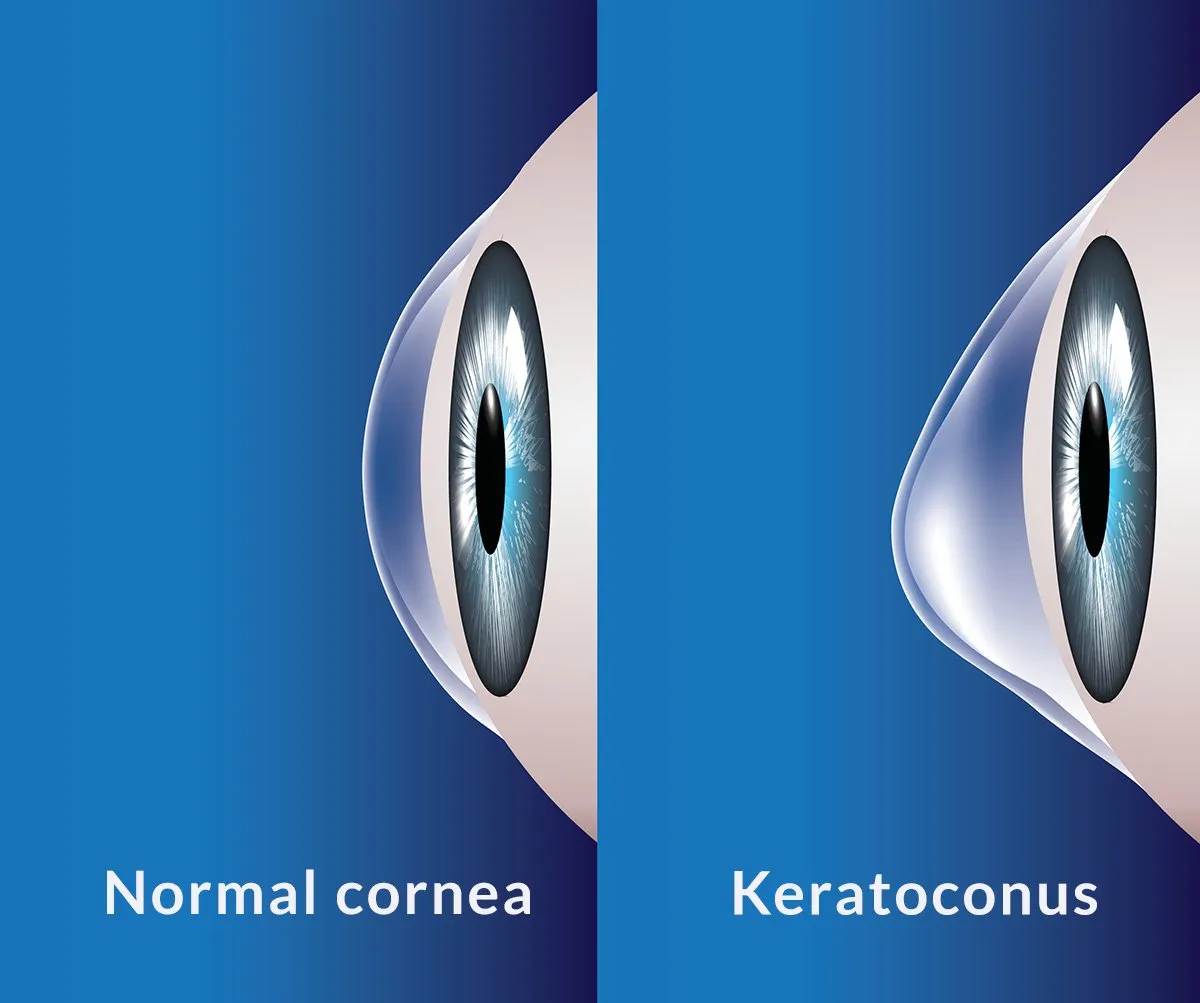Corneal Collagen crosslinking with riboflavin (C3R)
What is keratoconus?
Keratoconus is disorder that occurs when the normally round cornea (the front part of the eye) becomes thin and irregular (cone) shaped. This may result in blurry vision, double vision, nearsightedness, irregular astigmatism etc. Keratoconus Usually affects both eyes. Common complaints include frequent changes in the glasses/seeing a "shadow "around objects.
What is C3R?
Corneal Collagen crosslinking with riboflavin (C3R) is a treatment for keratoconus.C3R works by increasing collagen crosslinks which are the natural "anchors" within the cornea. These anchors are responsible for preventing the cornea from bulging out and becoming steep and irregular.
Corneal Crosslinking System:
This procedure, developed at Technische Universitat Dresden, Germany has been shown to slow or control the progression of keratoconus. During the corneal crosslinking treatments, custom made riboflavin drops saturate the cornea, which is activated by ultraviolet light. This process helps to increase the amount of collagen cross linking in the cornea and strengthen the cornea.

PLEASE UNDERSTAND:
- Collagen crosslinking is not a cure for keratoconus.
- The aim of the treatment is to arrest the progression of keratoconus, and thereby prevent further deterioration in vision and the need for corneal transplant.
- Glasses or contact lenses will be needed following the cross-linking treatment (although a change in the prescription may be required) but it is hoped that it could limit further deterioration of vision.
Corneal Collagen Cross Linking is contradicted in:
- Corneal thickness of less than 400 microns.
- Prior herpetic infections, because it may result in viral reactivation.
- Concurrent infections.
- Severe corneal scarring or opacification.
- History of poor epithelial wound healing.
- Severe dry eye.
- Autoimmune disorder.
Procedure:
- Anaesthetic drops are instilled in the eye.
- A lid speculum is placed. After disrupting the epithelium, drops of riboflavin 0.1% (vitamin B2) are given at fixed intervals for 15-30 minutes.
- After adequate riboflavin absorption, UV light is positioned at a small distance (1-5cm) from the corneal apex for a fixed time.
- Following irradiation, drops of antibiotic are given and a bandage contact lens or an eye pad is placed. The patient is given antibiotics to use postoperatively 3-4 times daily.
Advantages:
Helps to stop progression of keratoconus.
Complications:
Temporary stromal edema (70%), temporary haze (up to 100%), Corneal scarring and sterile infiltrates and very rare infectious keratitis: Bacterial/protozoan/herpetic.
This information leaflet does not contain all the information about C3R. In case you have any query or questions please ask your doctor.




